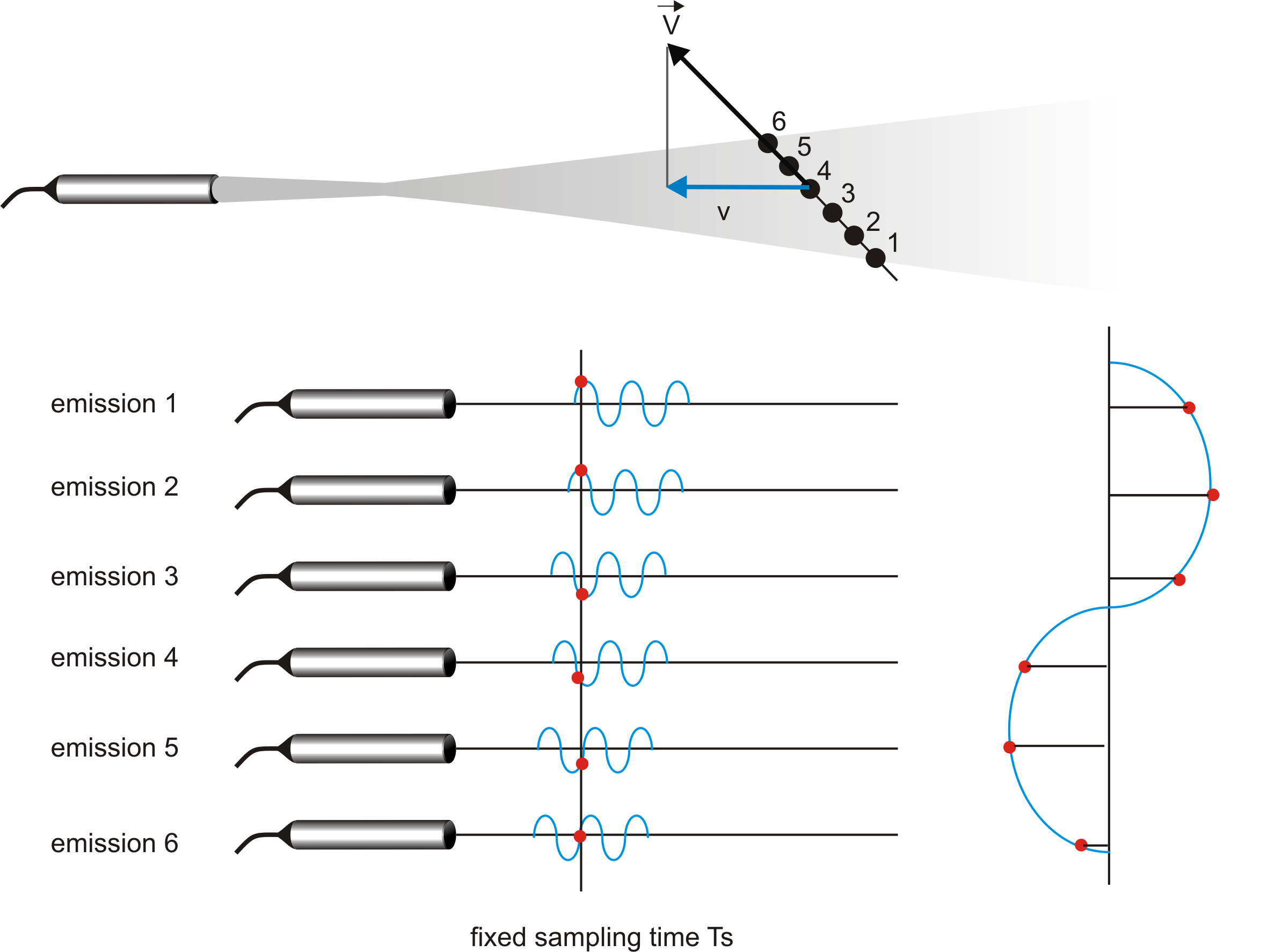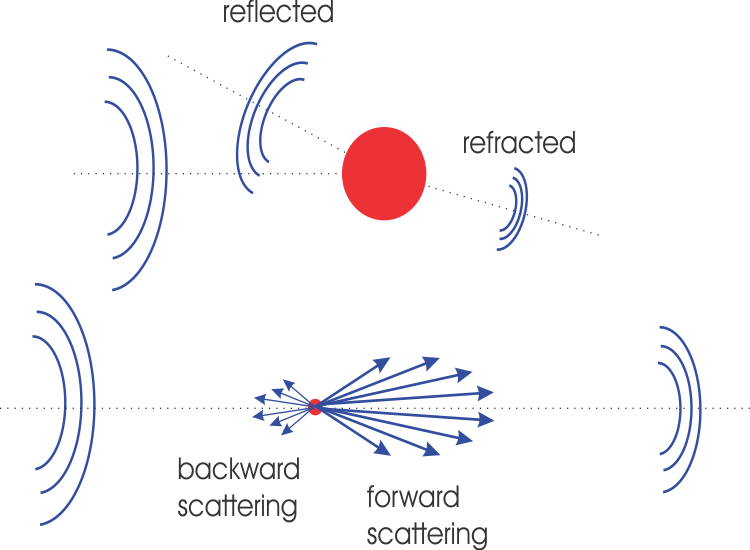Doppler ultrasound technique, was originally applied in the medical field and dates back more then 30 years. The use
of pulsed emissions has extended this technique to other fields and has open the way to new measuring techniques in
fluid dynamics.
The term "Doppler ultrasound velocimetry" implies that the velocity is measured by finding the
Doppler frequency in the received signal, as it is the case in Laser Doppler velocimetry. In fact, in ultrasonic
pulsed Doppler velocimetry, this is never the case. Velocities are derived from shifts in positions between pulses,
and the Doppler effect plays a minor role. Unfortunately, many publications, even recent ones, fails to make this
distinction, resulting in erroneous system description and fallacious interpretation of the influence from various
physical effects.











